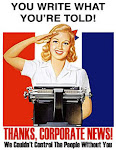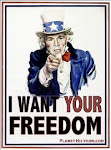Saturday 11 April 2009
by: Seth Sandronsky, t r u t h o u t | Book Review

A United Auto Worker union member on a General Motors assembly line in Kansas City, Kansas. (Photo: Reuters Pictures)
Back in the day, my mother took me to a big United Farm Workers rally. Until then, what I knew of large crowds came from sitting with my father at pro baseball games. That thrilled me. By contrast, the protesters and speakers at the lively UFW event totally rocked my world. To be a part of such cohesion changed my vision of what working people could do to improve their lives. This view of human liberation, in which those who toil daily also actively engage with others politically, motivates author Michael D. Yates, a labor economist and educator, and Monthly Review editor.
His "Why Unions Matter" sheds critical light on the US labor movement at a time of promise and peril, nationally and globally. The author's approach to organized labor in the world's most powerful nation is personal and political. He is no armchair theorist. Yates's aim and interest is not to dazzle readers with theory. Rather, he wants to empower ordinary people to see their history as a way to change themselves and the world for the better.
To this end, the book reads in parts a bit like ethnography. That is, the author captures, in the first person, vivid snapshots of capital and workers. This is a holistic way of thinking and writing. At one point, he is the lead researcher with the UFW. Oppressed farm workers and their allies forge first-ever contracts with growers and packers. Tragically, such forces roll back these gains over time. Yates tackles the painful lessons.
What emerge from such accounts, put into the broader context of other US immigrants forming unions, including the International Ladies' Garment Workers' Union, are the social processes by which we live and create the world around us. More recently, the Coalition of Immokalee Workers, mainly immigrants, harvest fruits and vegetables in the southern US states for sub-minimum wages. Pushed to the wall, they joined with authors, churches, colleges and unions to win a hard-fought victory over employers who do business with fast-food giant Taco Bell.
Further, Yates writes of joining the California Nurses Association, which formed the National Nurses Organizing Committee in 2004, while on an organizing campaign in Texas two years ago. Texas is a right-to-work state, one of 20 in the US, where unions face steep legal barriers to growth. He gives us the inside story of how the nurses' union helped to organize union-free RNs, employing strategies and tactics to help build their consciousness and commitment. In this way, ordinary people achieved material gains, pay and benefits. At the same time, the CNA/NNOC's support for a single-payer plan of health-care coverage for all is a case of a union advocating for a public-interest policy. Such is the working-class ideology Yates calls for today, and what organized labor needs to voice to improve US society.
Regrettably, American unions have all too often after World War II failed to maintain a broad social focus, instead devoting most if not all of their energy to members. Yates analyzes the factors and forces, external and internal, propelling this trend. Union leaders cozy with corporate elites weaken democracy for rank-and-file members at home, while supporting US foreign policy, or economic and political imperialism, of African, Asian, Latin American and Middle Eastern nations. In an example of the latter, Yates considers the causes and effects of the AFL-CIO's International Affairs Department, now disbanded.
He is a "critical critic" of US unions, a theme throughout the book's eight chapters. In them, readers discover cases and contexts concerning union democracy and structures, collective bargaining, union politics, immigrant workers and race, gender, ethnicity and sexual orientation, and future tasks. There are no sacred cows here in terms of people or policies. The author, for example, argues that organized labor should have spent more money organizing non-union workers than it did ($100 million) to elect Democratic President Barack Obama.
Yates uses data, charts and graphs sparingly. The 24 pages of Resources and Notes at the book's end provide digital and print sources for readers who seek more knowledge about unions and the labor force, past and present. "Why Unions Matter" is a fine book for readers to begin or continue that journey.
Seth Sandronsky lives and writes in Sacramento. Contact him at ssandronsky@yahoo.com.




























No comments:
Post a Comment